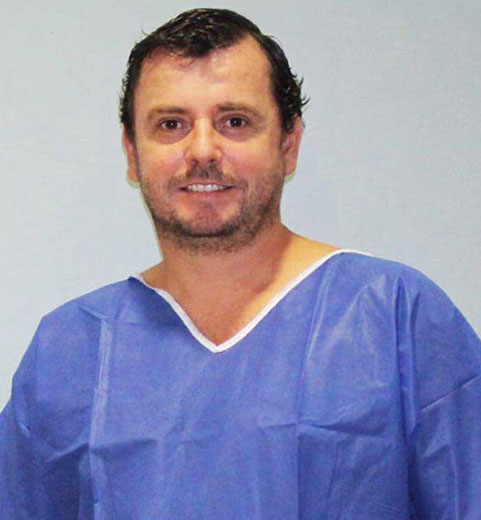feature storY
Global Spine Congress Focus
HIGHLIGHTS
MEET THE AOSPINE MEMBERS

Surgeon-in-chief of the Orthopedic Spine Division at the Hospital Las Higueras, Talcahuano, Chile.
Professor of Orthopedic Surgery at the Universidad Católica de la Santísima Concepción, Concepción, Chile.
Why did you decide to become a spine surgeon?
I became motivated when I realized that the spine patients were not given the appropriate treatments and diagnosis when I was a resident in orthopedics at the University of my hometown Concepción. Thus, I went to study the diseases related to the spine. Today, I still feel very motivated, since the technologic advances in the surgical techniques continue to grow amazingly. They gives me the chance to use a variety of surgical tools and encourage me to improve continuously.
Where did you get trained?
I trained through a rachis surgeon fellowship from the University of Barcelona. While I was there, I worked in several hospitals such as the Clinic, Bellvitge and the Sant Joau de Deu, all of them located in Barcelona, Spain. I am very grateful to my mentors, teachers, and friends Dr. Salvador Fuster, Dr. Frederic Font and Dr. Nolberto Ventura. I also participated in cervical spine surgeon internships with Dr. José Manuel Casamitjana (R.I.P), who was a great teacher and friend of mine, in the Hospital Vall d'Hebron in Barcelona, as well as with the Drs. Luiz and Emiliano Vialle in the Hospital Cajuru in Curitiba, Brazil.
How do you train today and how do you make sure you stay up to date?
I frequently participate in face-to-face and virtual activities organized by the AOSpine and other institutions. Recently, I’ve been improving the MIS and endoscopic techniques in Spain with the specialists Ricardo Casal, Javier Sánchez and Avelino Parajon. I’ve also been very engaged with the co-work to solve complex cases in my country.
Who inspires/inspired you?
I think that the patients affected by spine pathologies were my main influence since they inspired me to study their injuries in order to be able to help them. It is also an inspiration to go to work, to develop and encourage the new generations involved in this specialty.
Can you tell a bit in general about spine surgery in your country?
I’ve experienced exponential growth, especially in Santiago de Chile, with excellent specialists who are renowned nationally and internationally.
Introductory and advanced courses are offered throughout the country to train surgeons who are at the beginning of their career in spine surgery.
How does your typical workday look like?
I work three times per week in the public Hospital Las Higueras. The rest of the week I work in private clinics. However, I don’t work on the weekends in order to be able to spend time with my family.
Which are the most frequent operations?
Degenerative Diseases; Cervical Spine and Thoracolumbar traumas, tumors, and infections.
What are the biggest challenges in your job?
The most significant challenge is to improve the registrations of all the patients in the Spine Unit of the Hospital to facilitate the collection of data so that clinical studies will be possible.
It is also a challenge to make clinic meetings permanent and to increase the number of spine surgeons in the city.
What do you consider the biggest challenges for spine surgeons in your country?
To increase the number of specialists to cover the necessities of the national territory.
Where do you see opportunities for spine surgeons in Chile (and in South America in general)?
The biggest opportunities are to develop research and multicentric studies to unify the criteria and to show that we are actually doing a good job.
What advice would you give to a young surgeon?
To persevere in the studies and to continue improving. Surgeons should endeavor to make the practice of medicine more human.
What does being a member of AOSpine mean to you, how has AOSpine influenced your career?
Since I became part of it, I have learned that this foundation is like a great family of spine surgeons that offers unlimited possibilities of knowledge through an excellent web platform and multiple face-to-face and virtual courses.
Why would you recommend to become a member of AOSpine?
Because it is an institution that allows to improve ourselves in a serious and continuous way. Besides that, it offers the chance to get to know colleagues and to share diverse points of views regarding the same topic.
Osvaldo
Ojeda Serrano
Chile
Newsletter 16 | April 2018
Newsletter 16 April 2018
feature storY
Global Spine Congress Focus
HIGHLIGHTS
MEET THE AOSPINE MEMBERS